MOVING OBJECTS:
AFRICAN & OCEANIC ART 3D MODELS
See Art from a New Perspective
Explore interactive three-dimensional models of select sculptural works from the exhibition and discover the artistic techniques used to create them.
All photogrammetry models by:
Timothy C. Johnson / tcarneyjohnson
To learn more about the art on view in Moving Objects: African and Oceanic Art, please read the exhibition catalogue.
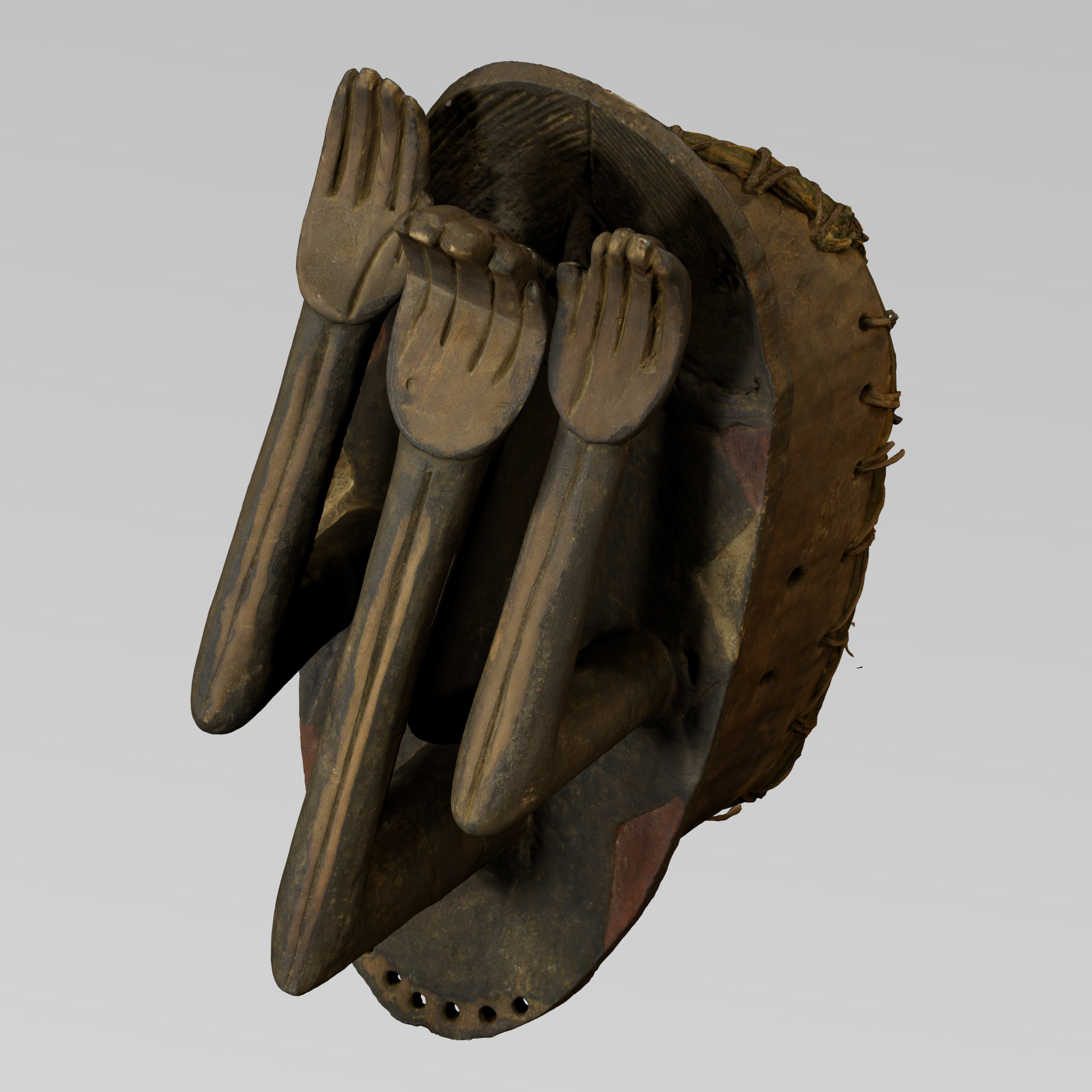
_________________________________
Face Mask (Africa)
The story of this mask is the story of a “moving object” and contact between ethnic groups over several centuries. Kru sailors worked as migrant laborers on European ships from the mid-17th century, carrying their culture with them. The style of this and other Kru masks suggest a sharing of ideas among people along the west coast of Africa from Ivory Coast to Cameroon (Douala) with an important fulcrum in the Niger Delta among the Ijo.
____________________________________
Maiden Spirit Mask (agbogho mmuo) (Africa)
The Igbo Maiden Spirit Mask combines ideas of human and spiritual beauty. Fine features and elaborately dressed hair suggest physical beauty while the chalk white face refers to the spirit.
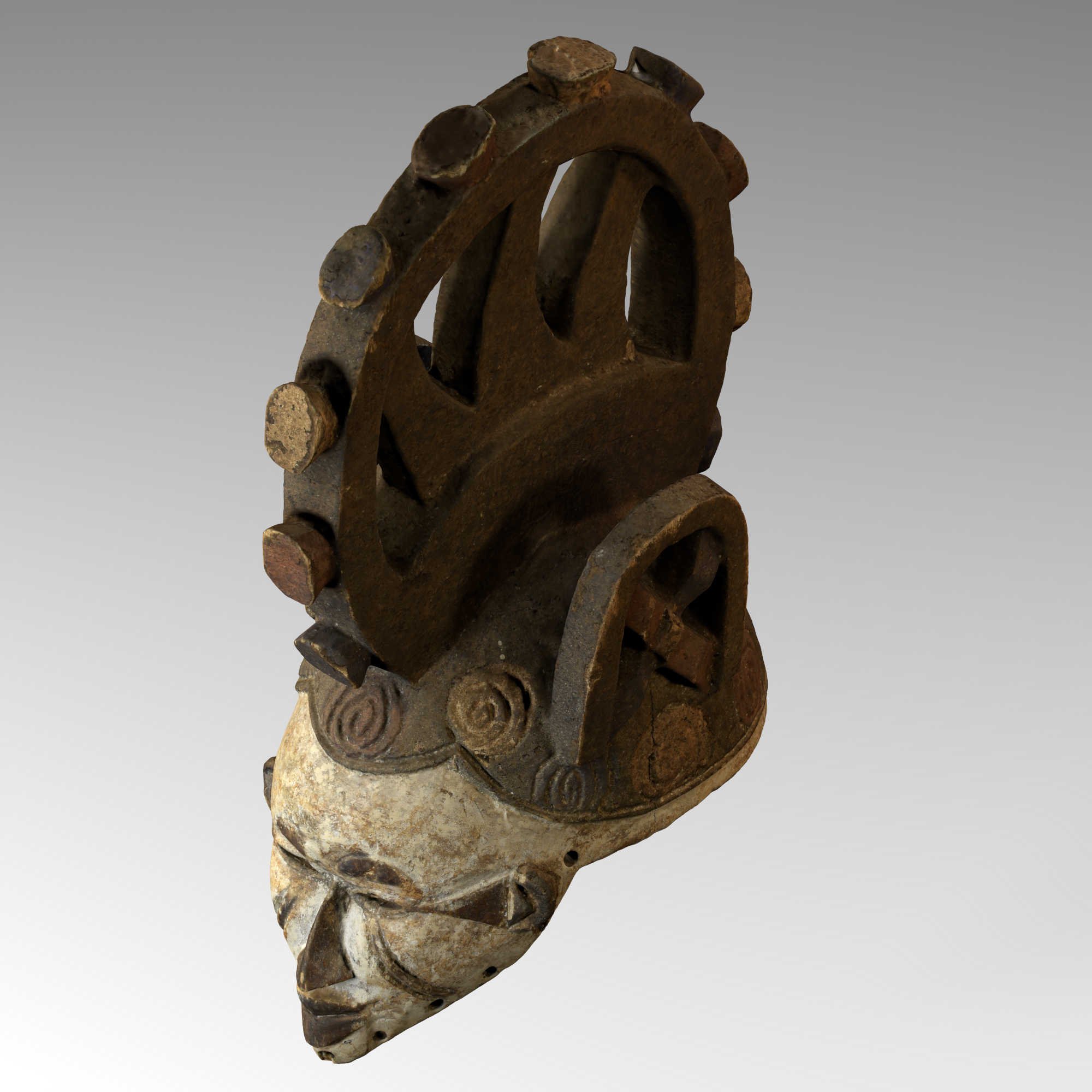
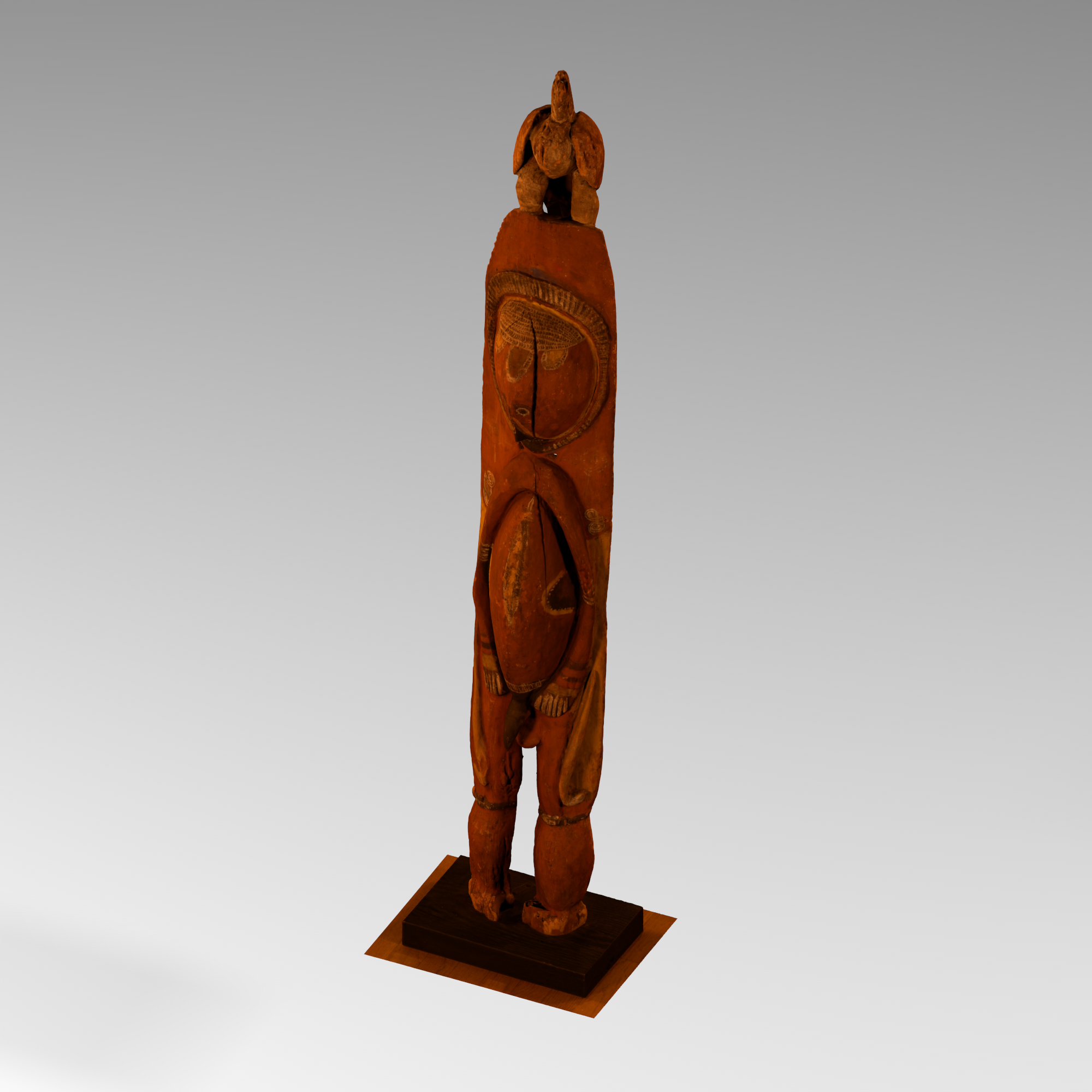
_________________________________
Male Clan Spirit Figure
Surmounted by a Hornbill (Oceania)
A major institution in an Abelam man’s life is the men’s spirit cult, with an initiation process that takes 20-30 years. Large clan spirit images (nggwalndu) are used during the final ritual. Though impressive sculptures, the figures are effective in Abelam eyes because they are brightly painted. For the Abelam, as for many cultures in New Guinea, paint is a magical substance that endows its subject with supernatural power and beauty.
____________________________________
Champion Farmer Staff (sejen) (Africa)
Senufo champion farmer staffs are trophies given to the leaders of agricultural teams that win farming contests. The “champion farmer” title brought a man respect during his lifetime and special tribute at death. The soaring eagle symbolizes the oversight of elders who protect future generations.
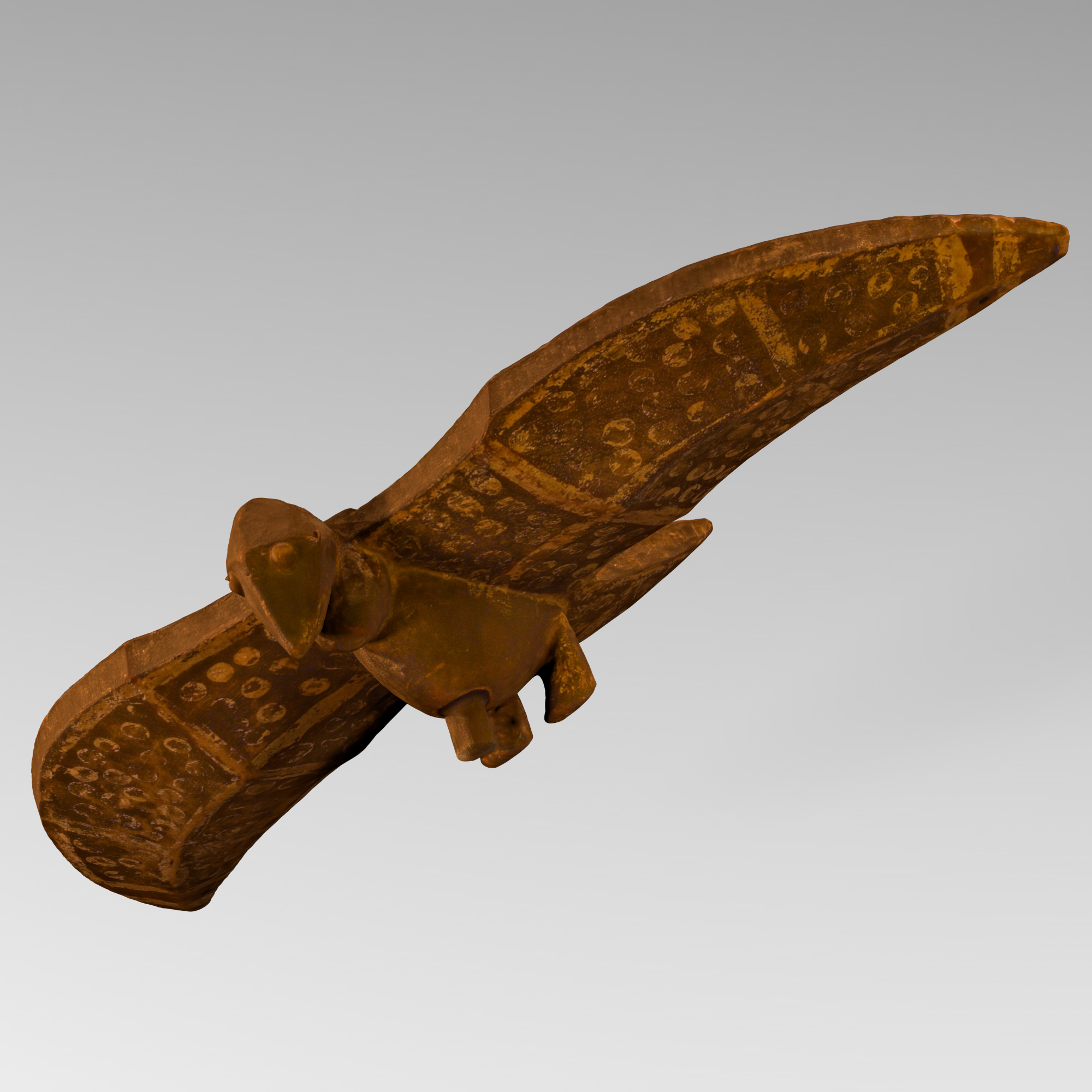

_________________________________
Blacksmith’s Mask
(hombo) (Africa)
Masks define the character of a Bwa masquerade rather than the body costume, since similar costumes are worn with all masks. This mask represents hombo, a spirit associated with Bwa blacksmiths. However, it is often identified as a rooster (kobiay)–a sacrificial animal that facilitates communication with the spirit world.
____________________________________
Mask (Didagur) (Oceania)
The Kapriman wear this mask with a full body costume. Male Didagur masks with their long noses represent spirits of the natural world. They participate in the ceremonies young men undergo leading to manhood.

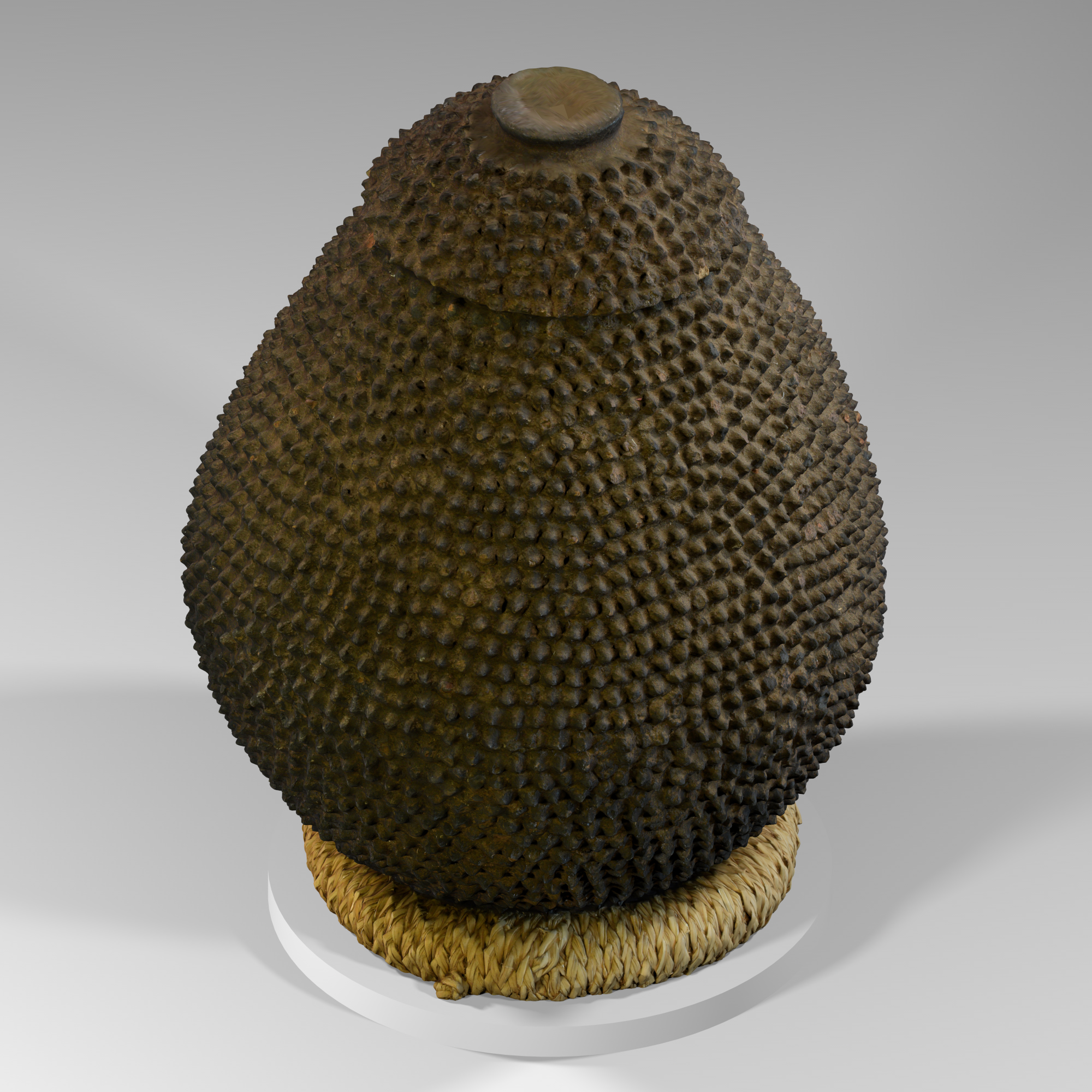
_________________________________
Altar Vessel (Africa)
Altar vessels contain the offerings that help people communicate with the spiritual forces honored with shrines in Lobi homes. The rows of pointed knobs that ‘wrap’ the pot symbolize protection against witchcraft, misfortune, and illness; provide supernatural protection during initiation; and promote having many children and good crops.
____________________________________
Toguna Post (Africa)
A Toguna (literally ‘mother shelter’) the meeting place for elders—stands at the center of every Dogon village. It is intentionally low and open so that men must remain seated and calm during discussions. It is supported by eight posts and thatched with eight tiers of millet stalks, referring to the eight mythical ancestors of the Dogon. The breasts on the posts refer to fertility, and thus the future of the Dogon people.
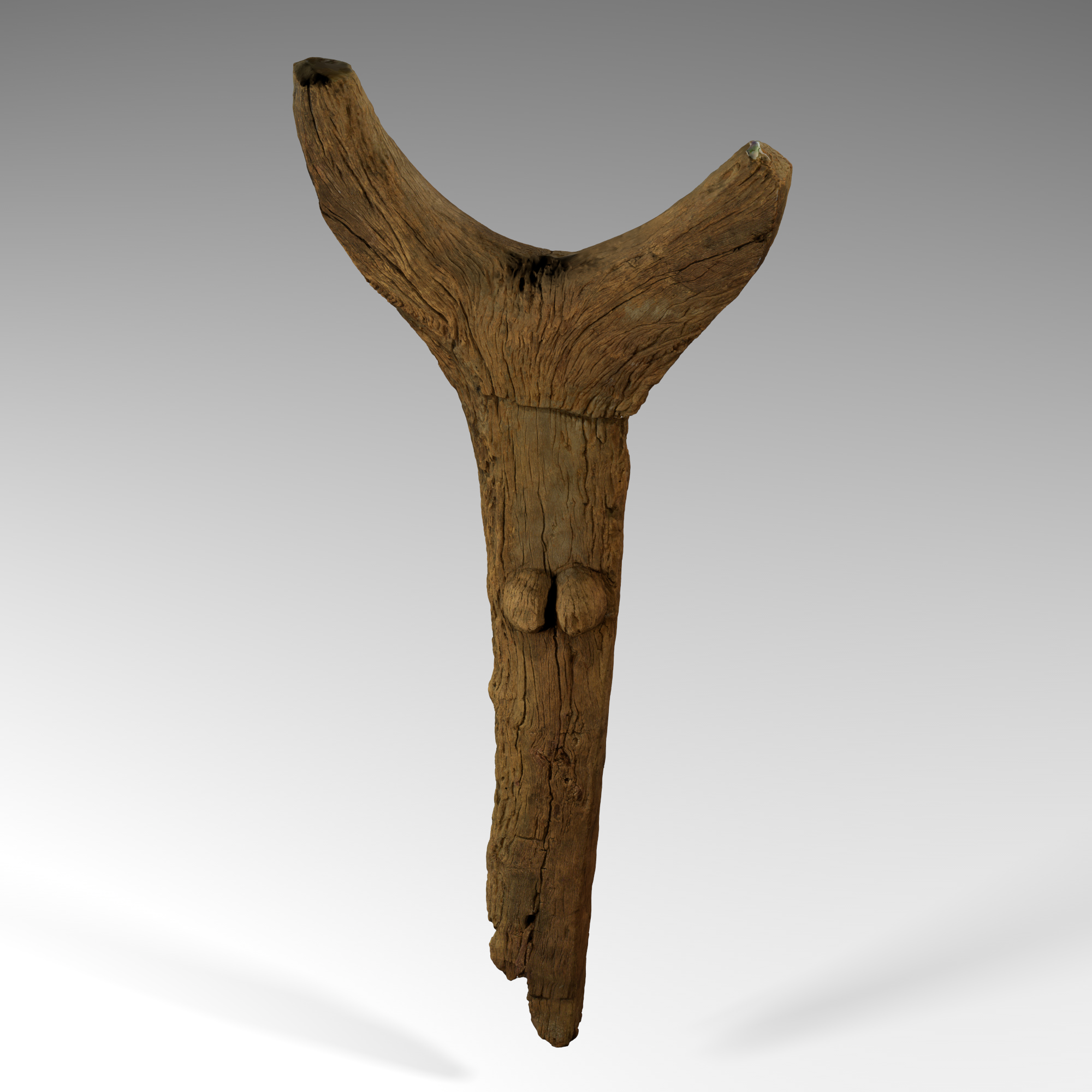
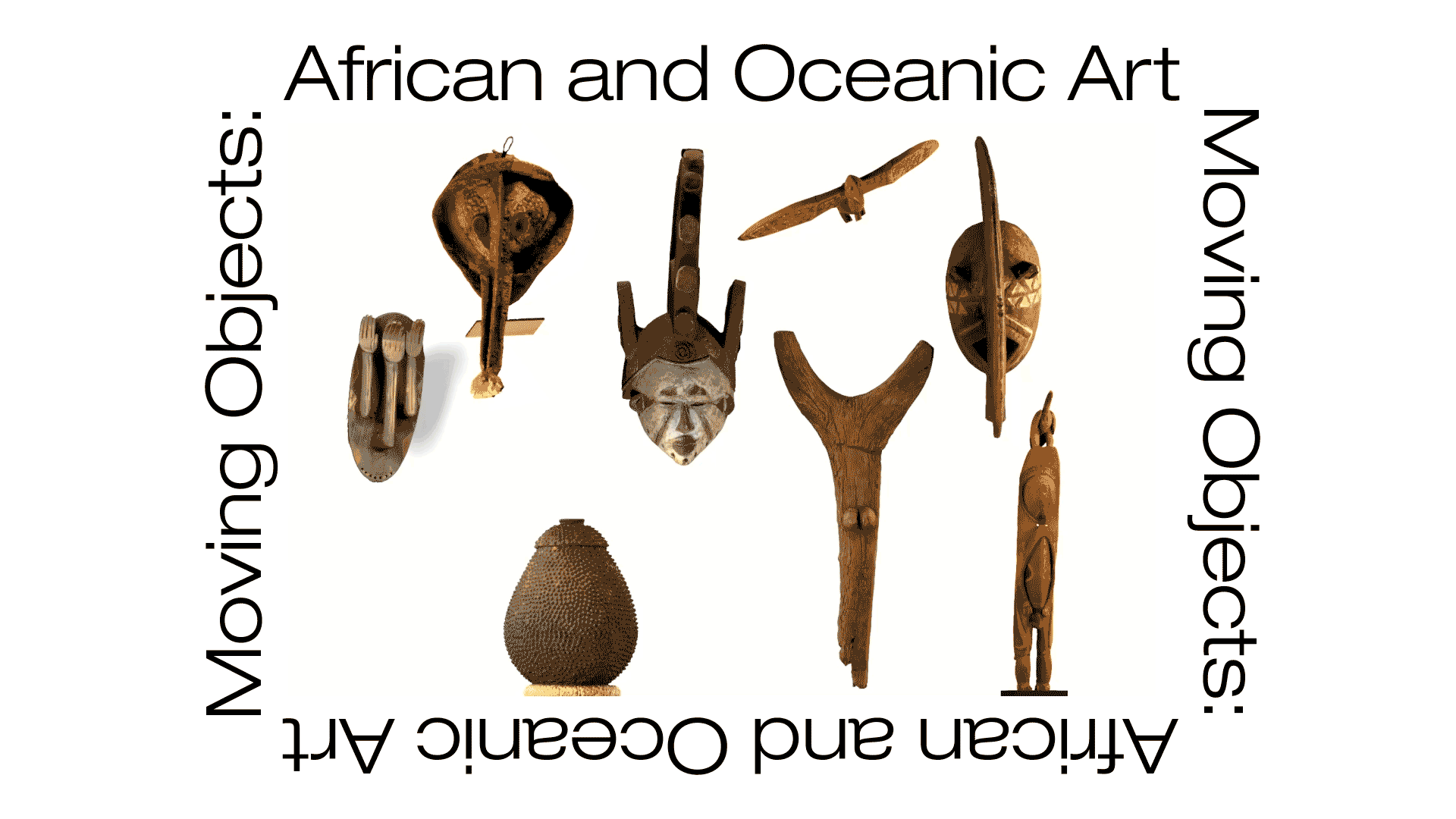
Links for the Eight 3D Models now Available on Sketchfab
____________________________________



